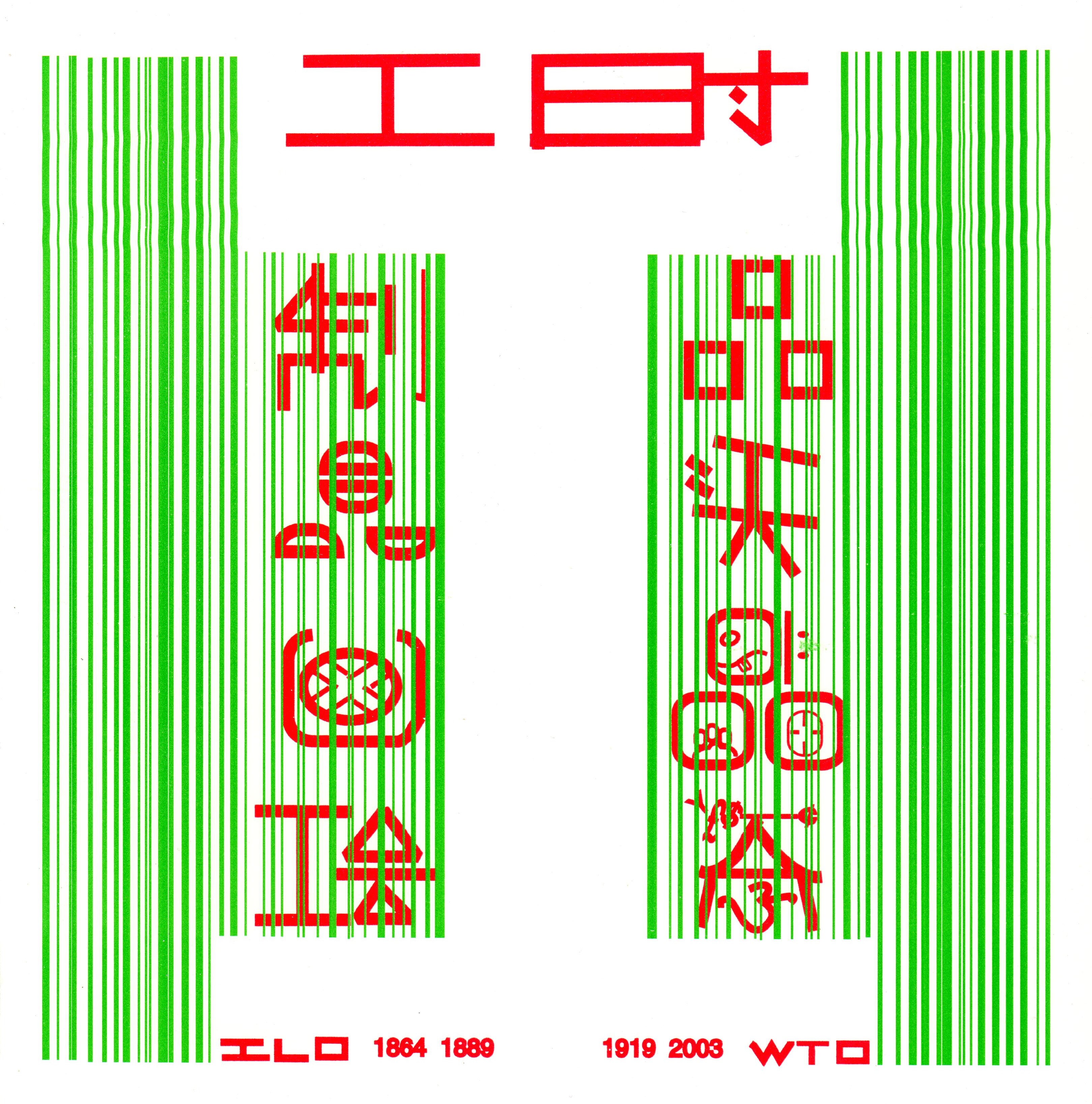Celebration, 35th Anniversary Exhibition IV
The “International Behind the Bar Code Exhibition” opened BSDW 2000 in 16 store front windows of downtown Birmingham, Alabama, USA and on the World Wide Web. (We say “BSDW” for the day after the US Thanksgiving holiday because it is when we begin shopping for presents to give on the Christmas holiday and the “Biggest Shopping Day in the World” of American retail.) The Birmingham exhibit was from November 24, 2000 until January 16, 2001, the day after the holiday celebrating the birth of Dr. Martin Luther King, Jr. There were two weekend participant planning previews that summer, one for the national Labor Arts Exchange at the Meany Center for Labor Studies in Washington, D.C. and one for the USAS Students’ National Conference in New Orleans.
The Exhibition has three parts: a visual arts installation, a performance event, and an interactive website. It extends the product content measures already present in product labels and bar codes to include labor content. Using modern international ancient Chinese, Egyptian, and Meso-American pictograms along with Latin and Arabic signs for initial sounds, the art shows that people who do not understand each other’s language nor monetary currencies may label the products they exchange in international standard units of time. The product is knowable today at a level of accuracy not conceivable since the primitive days of production for exchange. Electronic inventory tracking permits constant updating at each point work time is added as well as recalculation of international average work time in all commodities competing for the same market shelf, in other words, of similar use.
The private secret code of exploitation cannot be broken with a hammer nor a bomb, but art can transform it to its opposite. The International Behand the Barcode Exhibit as art is the art of making transparent and equitable exchanges of different forms of labor time, i.e., fair trade, permanent and normal. It may be called the art of global villagers, who are both workers and customers, also artists, for each other.
The Exhibition opens and closes with the performance of a new song and dance that ask questions to reveal (in many languages including English) what may not be obvious in the picture symbols. It asks Americans, particularly as members of our trade unions, to insist that freedom be included when measuring standard of living or human rights, and that freedom be measured in real units, hours of free time – paid time off jobs protected by union contracts – for the pursuit of art, science, family life, peace, baseball, etc.… What our Jefferson meant by “the pursuit of happiness.”
Peggy Powell Dobbins grew up in Texas and spent most of her life in New Orleans, Birmingham, and Atlanta with long stints in Massachusetts, New York, and California in between. In the 60’s she was active in New Orleans and New York in the Women’s Liberation Movement. In the 70’s she came back South to finish her PhD in Sociology at Tulane and taught at the University of Alabama until 1980. She was active in campaigns for Civil Rights and Labor in Alabama (1981-1993), and against reversing Affirmative Action and denying social services to undocumented immigrants in California (1993-1996). When she came back from the South in 1996, she turned to art to share what she believed to be the most important, but found the most difficult, to communicate. Now recognized as installation and civic ritual performance art, the Labyrinth of Rue for Pilgrimages of Repentance by White Southern Women from Confederate Graves to Dr. King’s Tomb has occurred in evolving forms during the past decade in Atlanta. The concept, leading participants (including her mother upon whose nomination Dobbins was admitted membership in the United Daughters of the Confederacy), and the rue bricks themselves, were fired in Birmingham.
Now back in Atlanta, working with Donna Stephens as member of Chattahoochee Brick Company Descendants Coalition she spearheads and Board of FFRN (Fund For Reparations Now), composed of whites in different parts of US who raise funds for reparation projects authenticated as reparation and assigned to us by NAARC (National African American Reparation Commission), pending passage of H.R. 40.
Space One Eleven Involvement: Exhibiting Artist: International. Behind the Bar Code 2000, Politics, Politics 2006, Now and Then 2007
